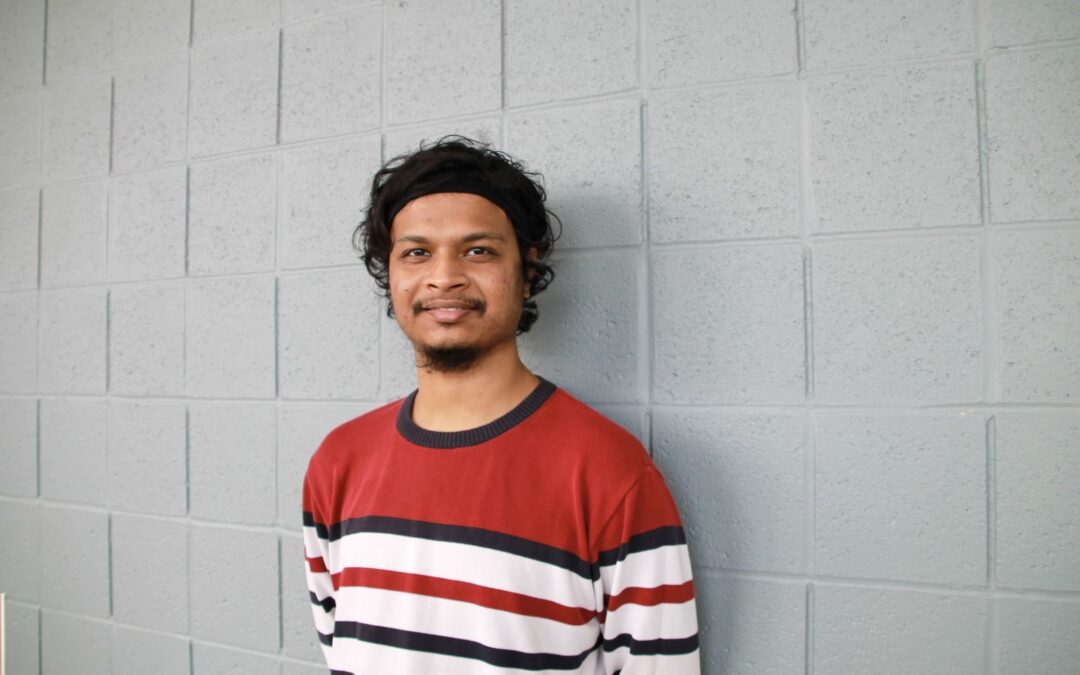Sourya Sengupta, Electrical and Computer Engineering Graduate Student
TiME Program Trainee, 2021 Cohort
What does your educational path look like? What did you study in your undergraduate?
I completed my undergraduate degree in electrical engineering at Jadavpur University in India. Then, I received my masters (by research) in Systems Design Engineering and Vision Science from Waterloo University in Canada. Then I joined the UIUC PhD track in electrical engineering.
What first led you to your interest in science?
In 11th grade, there was a science camp where I was able to meet a lot of engineering graduates and undergraduates. From there, I started to think about exploring engineering. After 2 years of studying engineering, I discovered that engineering tools can enhance and improve healthcare products. That’s how I started to explore how to better analyze healthcare.
Why is cancer research important to you?
Cancer research is important on a worldwide scale. The research that we do as researchers is extremely vital and whatever we can contribute towards developing tools to properly diagnose the disease beforehand is helpful for everyone in the world.
How has being in the TiME program helped you grow as a researcher?
The TiME program is beneficial because it allows people from different backgrounds like engineering, biology, and biochemistry to share different perspectives. I am from an Engineering background, TiME allows me to learn about relevant clinical problems, and biological insights which are extremely helpful for my own research. Additionally, TiME trainees have three main mentors (Prof. Pool, Prof. Gaskins, Prof Bhargava) who are especially helpful when it comes to helping us learn and enhance our knowledge on interdisciplinary topics.
Tell us a little about your research.
My work is dedicated to the computational analysis of microscopy images, which provide us with images of cells and tissues of our body. It’s sometimes difficult for clinicians to see all the details and shapes from these images. My work is to develop algorithms so that the computer can detect differences in shapes of cells and abnormalities to assist clinicians. Basically, I am developing computer-based methods so that cancer diagnoses can be predicted in the early stages and quickly accelerate the process of cancer treatments.

What are some challenges that you are currently facing in your research?
Coming from an Engineering background, we sometimes face challenges because we are not trained, clinicians. I’m not from a clinical background, so it sometimes get a little difficult for me to understand certain clinical motivation or background of a particular problem. However, this is why we have collaborators from clinics and different labs. If I’m in doubt, I always communicate with clinicians and experts in the lab.
What is your favorite part about working with your lab?
I work in Computational Imaging Science Lab led by Prof Mark A. Anastasio. Our lab is a super fun place to work. My favorite thing about my lab is that it has a collaborative environment where the students interact a lot. Different students work on different medical imaging modalities but we all share and discuss our own projects with each other. I must say that Prof Anastasio is an awesome advisor, he is always available for his students and at the same time provides enough independence for their own work.
What is your favorite project you’ve worked on?
We collaborated with Professor Gabriel Popescu’s lab and worked on a segmentation algorithm for white blood cell detection. We wanted to specifically detect different types of white blood cells from the images acquired by a quantitative label-free microscopic imaging system. It was extremely exciting to design algorithms to analyze real-world medical imaging data.
What do you hope to do in the future?
I’m not fully sure yet, but I will probably try to get into a research and development industry that specifically works on healthcare-related domains. I’m looking forward to solving interesting problems for the remainder of my PhD program.
Outside of your research, what are some of your personal interests?
I am very much into music. I used to take formal lessons on eastern classical music. Nowadays I sometimes compose my own song and I have a small YouTube channel where I upload the recorded songs. I have also a deep interest in poetry and recitation.
– Written by Lisa Mei, CCIL Communications Intern
The Tissue Microenvironment (TiME) program is a university-wide training program for graduate students, supported by a T32 grant from the National Institutes of Health. Click here to find out more.

